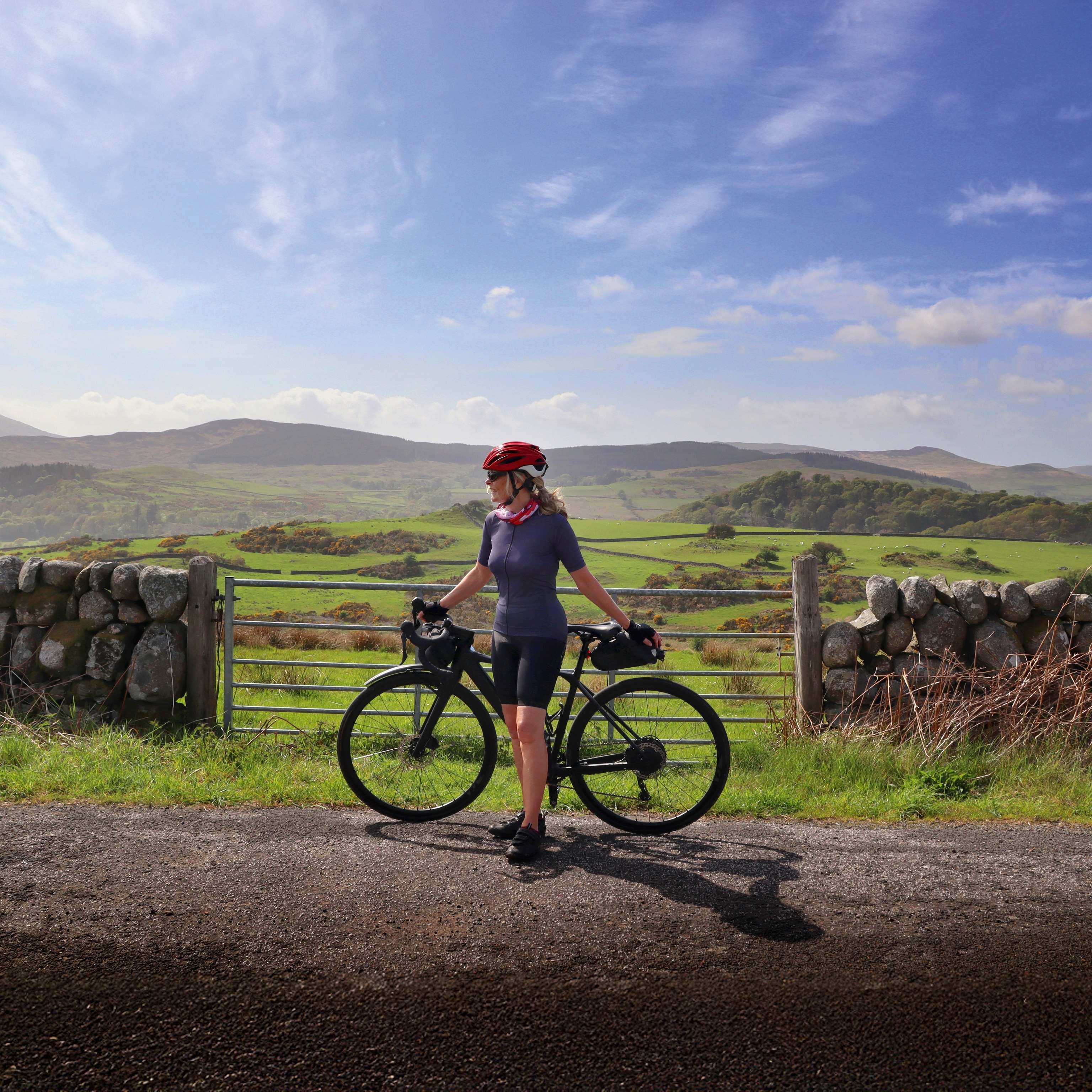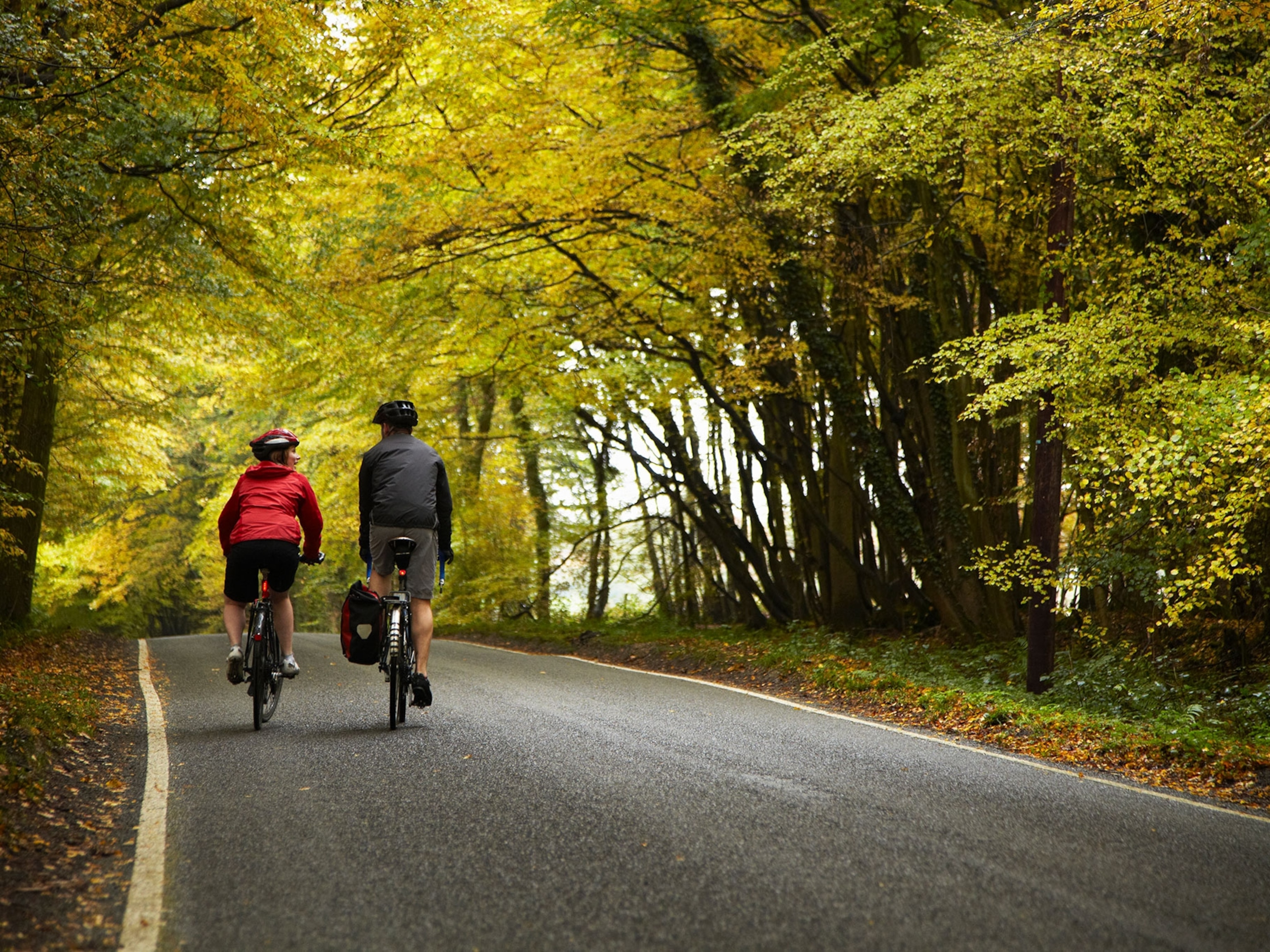American Bike Project: When Things Go Wrong
Learn about what happened when National Geographic Travel photographer Tyler Metcalfe toured the U.S by bike.
On the evening of Monday, May 23, I woke up in a hospital room.
I didn’t know where I was or why I was there, but I knew something hadn’t gone according to plan. My body was in pain, and I could feel the wet stick of blood on my pillow.
My parents, who had arrived from Oklahoma in haste, told me that I had been hit by a car in Pittsburg, Kansas. I had suffered broken bones, torn muscles, and a serious concussion. My memory from the day was completely wiped. Shortly after the accident I couldn’t recall being on a bike tour, couldn’t remember the name of our president, and didn’t know my birthday. In the day that followed, I was able to regain much of my memory previous to the accident, but to this day I still have no recollection of the wreck or the hours that followed.
“There are going to be times when you lose it. You’ll be hot, tired, and alone in the middle of nowhere, and everything will be going wrong.”
Four months ago, as I began planning my cross-country bike tour, a good friend offered these words of advice. Having spent the summer of 2013 biking from Colorado to Florida, he had become my go-to source for all questions related to bike touring. In most cases he offered only encouragement and enthusiasm for my journey, but now, in a rare state of realism, he set this dose of reality firmly on my shoulders.
“In moments like these, you’ll throw your bike down and yell in frustration.”
I doubted it.
In the months leading up to my trip I was filled with the overwhelming hope and optimism that comes with planning an adventure, and I was able to brush aside any distracting thoughts about potential hardships during my journey. I didn’t see any sense in dwelling on situations that would be out of my control.
Three weeks into my ride, however, I found myself living out his predictions.
When Things Go Wrong
I was nearing the end of a 70-mile day as I approached the outskirts of Chester, Illinois, home to Elzie Segar, creator of the “Popeye the Sailor Man” cartoon. Cold rain had pummeled me all day long and I began to relate to the fictional maritime character. I was soaked to the bone and working to keep my body temperature up, and by the end of the day I felt a like a sailor who had been out to sea for too long.
In an effort to boost my morale and avoid a 30-mile section of steep hills ahead, I turned down an alternate route listed on my map. This series of alternate roads paralleled the Mississippi River and was much more forgiving in terms of elevation, so I jumped at the opportunity to finish my day on an easier route. Ten miles later I discovered why the route was labeled as an alternate: The roads ahead were covered in long patches of muddy gravel. I pressed on, but my pace was slowing and time and distance seemed to crawl as the rain continued to drown my spirits. To make matters worse, the cold weather started forcing my bike gears to slip, and with every effort to adjust them I seemed to be making the problem worse.
With every pedal stroke my frustration built. I was ready to be done for the day, but the more I focused on that feeling, the farther my destination seemed to become. Eventually, after passing a road that I thought I had crossed miles earlier, I realized I had only traveled half the distance I imagined. Upon inspecting the map, I noticed that I had also made a wrong turn and would have to backtrack a few miles. At this point, my frustration boiled over, and I dropped my bike in the mud and let out a loud yell.
Then I laughed.
I realized I was living out the very situation I imagined would never happen to me. Standing under a dripping cluster of trees, I smirked at my slight misfortune and reminded myself that at the end of the day I would likely end up in a dry shelter with warm food in my belly. Furthermore, I knew that in the grand scheme of things, my problems could be much, much worse.
Unfortunately, I would turn out to be right about both.
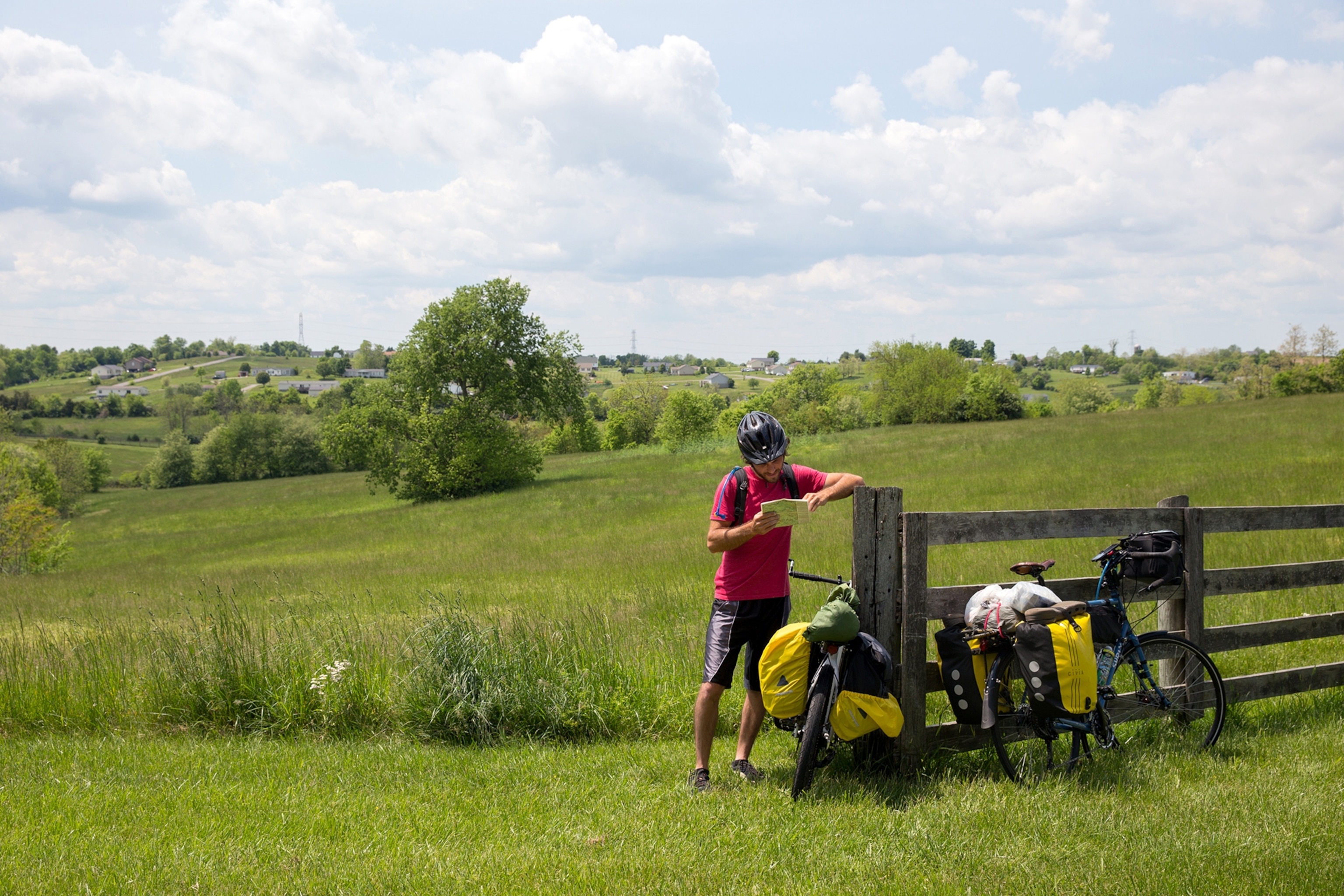
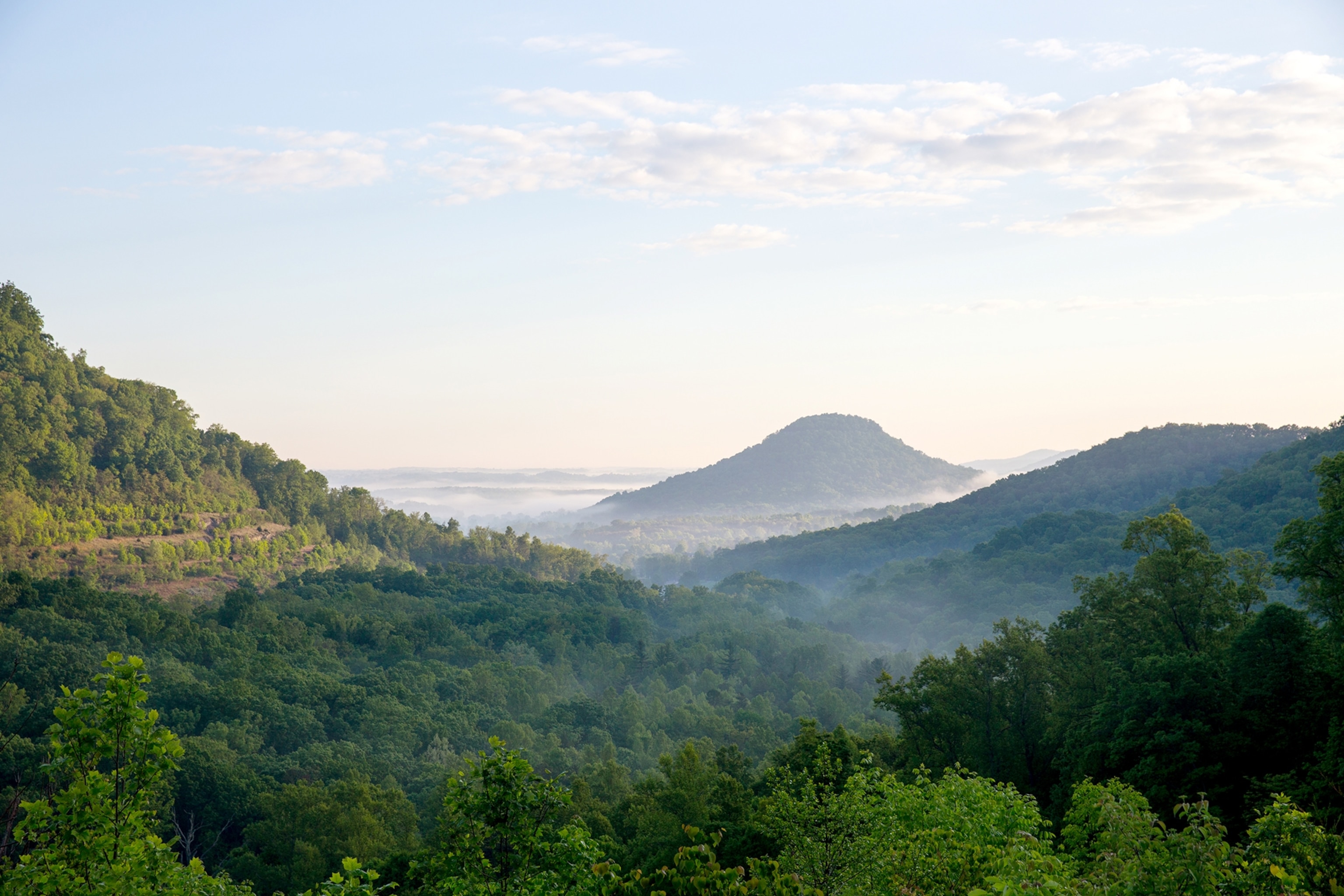
When Things Go Right
Later that evening I arrived at the Fraternal Order of Eagles in Chester and was elated about the prospect of a warm shower and food. The social club offers free lodging to TransAmerica cyclists passing through the city and is composed of three buildings: A large bar with a few common rooms, two sand volleyball courts surrounding a tiki hut, and a small bunkhouse at the rear of the property. The bunkhouse is a small, single room that contains six bunk beds lining the walls of the plain white shelter, and it is here where bicyclists are invited to stay for the night. As I began to settle in, I was joined by two other TransAmerica trail cyclists. Bruce, who I had been leapfrogging with on and off throughout the trip, rolled in on his recumbent trike and we exchanged familiar greetings for the fourth time on the trip. A short while later we were joined by Alan, a British man in his 60s who was riding the TransAmerica route from west to east. The three of us spent the evening warming ourselves at the bar, drinking stout beers and sharing stories from our journeys. It was everything I had hoped to find after such a long, cold day.
On the Road
In the weeks leading up to my stay in Chester I had a handful of notable stops, the first of which was Mammoth Cave National Park in Kentucky. I spent a few days in the area exploring both the national park and a small town about 15 miles east of it, Horse Cave. A quaint town, Horse Cave contains little more than a slew of motels and a giant cave entrance in an unexpectedly central part of town. Here, tourists can zip-line over the cave or hike into the cave opening, all while in plain view of the small shops and cars lining the town’s main street. As I walked my bike between the street and the entrance to the cave, I was overcome with the feeling that humans’ modern infrastructure was slowly enveloping all of Earth’s wild places.
My hope was renewed the following day when I headed over to Mammoth Cave National Park. The cave contains over 400 miles of cave systems, most of which are only accessible to park rangers and members of the Cave Research Foundation. I spent the day with park ranger Vickie Carson, who gave details on the park’s creative conservation efforts, namely in the form of capturing lint from human clothing. Surprisingly, clothing lint is a common foreign object introduced into the cave system. Since the cave has little to no air current, lint that makes its way into the cave stays in the cave. Carson pointed out the park’s newly installed pathway rail systems, which are specifically created to attract and capture lint from the cave’s floor. Innovations like these renewed my hope in efforts to protect our wild places, and the sheer scale of the Mammoth Cave system left me excited about the fact that there are still places on Earth that have not yet been fully discovered. To this day, cavers are still discovering new passages within the Mammoth Cave system.
I moved west, and the days that followed included a slew of interesting activity, including a night spent sleeping under the stars at Illinois’ Cave-in-Rock State Park; a long detour around Eddyville, Illinois, where a police standoff with a fugitive prevented travelers from moving through the town; an unexpected stay inside a fire station during an extremely stormy night; and eventually, Chester, Illinois.
After my stay at the Fraternal Order of Eagles, I woke up refreshed, and most importantly, dry. I made my way over the Mississippi River via an intimidatingly narrow bridge and crossed into Missouri, my fourth state along the TransAmerica. Rain welcomed me here, and once again I was thrilled to find dry lodging for the night at a hostel called Al’s Place, which is an absolute haven for cyclists crossing through Farmington, Missouri. Big couches, a full kitchen, dorm-like rooms with multiple bunk beds, clean sheets, and a washer and dryer welcomed me in out of the rain. Such amenities had begun to seem like extreme luxuries after a month on the road.
- National Geographic Expeditions
At Al’s Place I met another TransAmerica cyclist named Max. We pedaled west together, stopping to explore Elephant Rocks State Park, a small but interesting park that contains a unique cluster of rock formations in the middle of the Ozark Mountains, and a few days later, we would cross into Kansas.
Here I would experience what it means when things go very wrong.
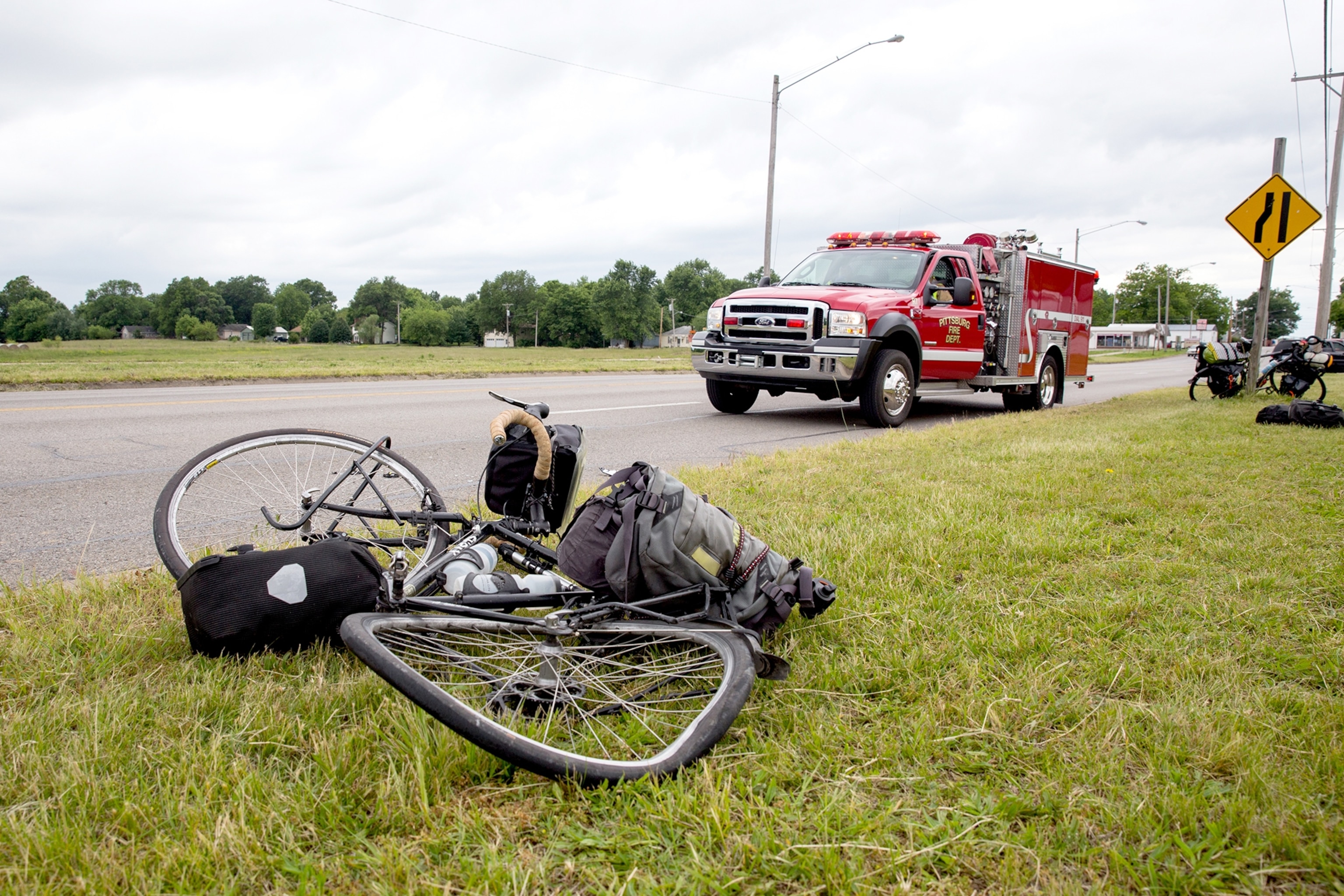
Lessons Learned
I left the hospital with a deflated morale. For now, my bike trip would be suspended. To have gone from complete freedom to near immobility was depressing, and I knew the process of recovery over the following weeks and months would be as tough emotionally as it was physically. My physical recovery would require lots of rest and physical therapy in order to regain my ability to walk properly. Mentally, the recovery would be less straightforward. Traumatic brain injuries often result in increased agitation, depression, and fatigue, and recovery can be filled with emotional ups and downs. Additionally, symptoms can remain for up to a year, and the effects can range in intensity from person to person and incident to incident. Ultimately, rest is the best medicine, and the weeks following a concussion are crucial in allowing the brain to recover. I was to engage in as little mental stimulation as possible, and after a month on the road filled with new places and constant stimulation, I knew this would be tough.
Until this point, all of my focus had been on the simple rhythm and freedom that came with bike touring. Day after day, I was stimulated by each detail I encountered, and was driven by the ultimate goal of embracing the moment. But now, as I undergo the process of recovery, I have trouble welcoming the same in-the-moment mentality and I am required to rest my senses. More often than not I have found myself trying to live in anything but the moment.
This experience has altered my perspective on what a worst-case scenario truly means. Four months ago, as I planned for my trip, I was filled with the mental protection of sheer optimism. I knew that dwelling on potential problems would in no way benefit my journey. But now, many of my fears, doubts, and uncertainties have surfaced. What if I get back on the bike and am involved in another accident? What if the outcome is worse the second time around? Is this journey truly worth such a risk?
This, I think, is where true courage comes into play. I have seen others in far worse situations who overcome their doubts and fears and do not let them dictate their lives. In the end, I must believe that letting fear control my actions could result in missing out on some of the most important moments of life. Travel can have a profound impact on those who take the opportunity to seek out new perspectives, and as a good friend recently mentioned, it is the duty of those who travel to share their experiences with others. In this way, travel can make the world a more connected place. It allows us to understand different mind-sets and cultures in an engaging way, as opposed to being limited to the single stories of places and cultures delivered by the media. When the time comes, I must choose to press on. My journey has taken a different course from what I expected, but no matter what happens in the future I plan to make the most of it, and I plan to share it.
The American Bike Project is not over.
